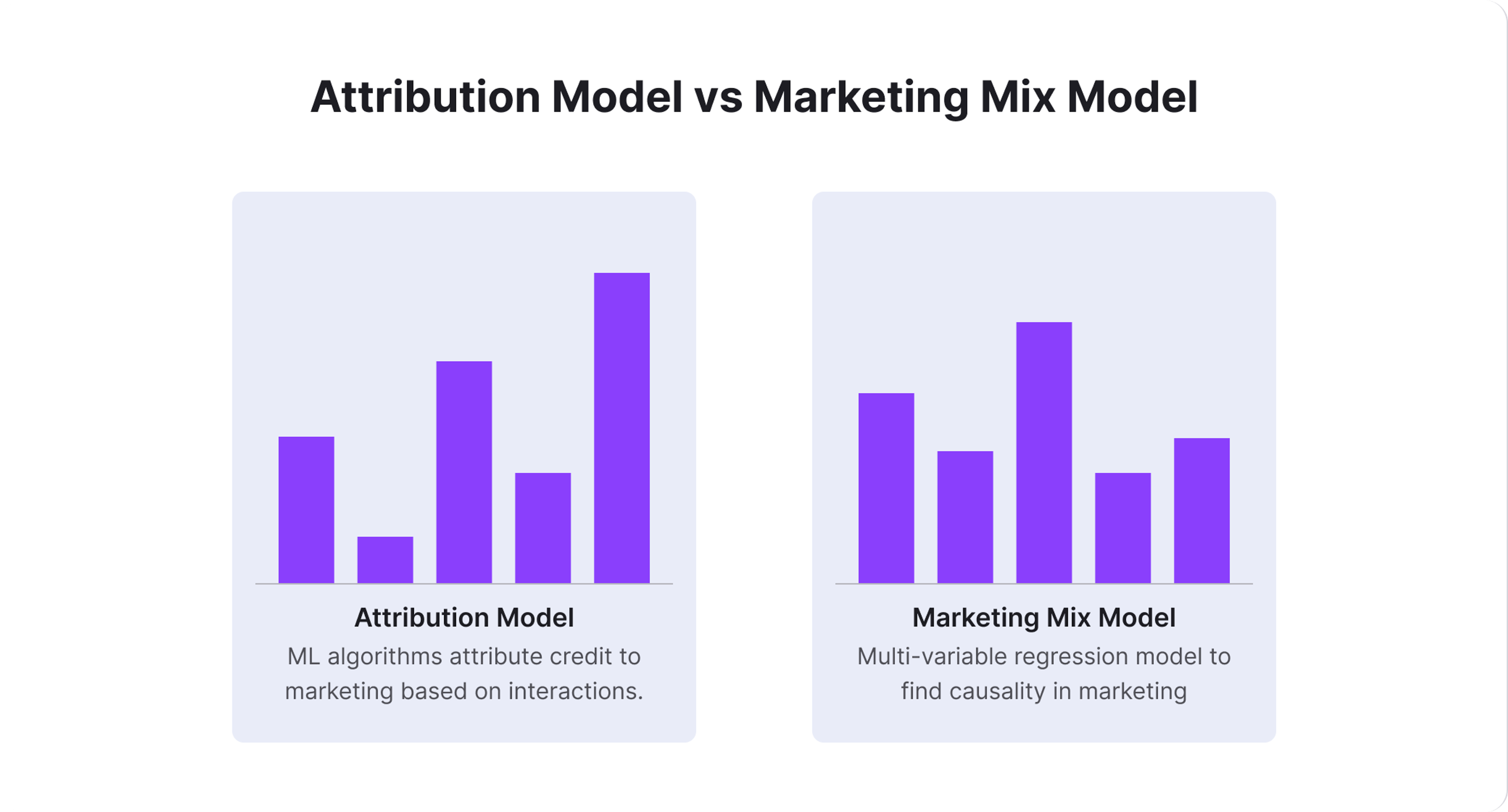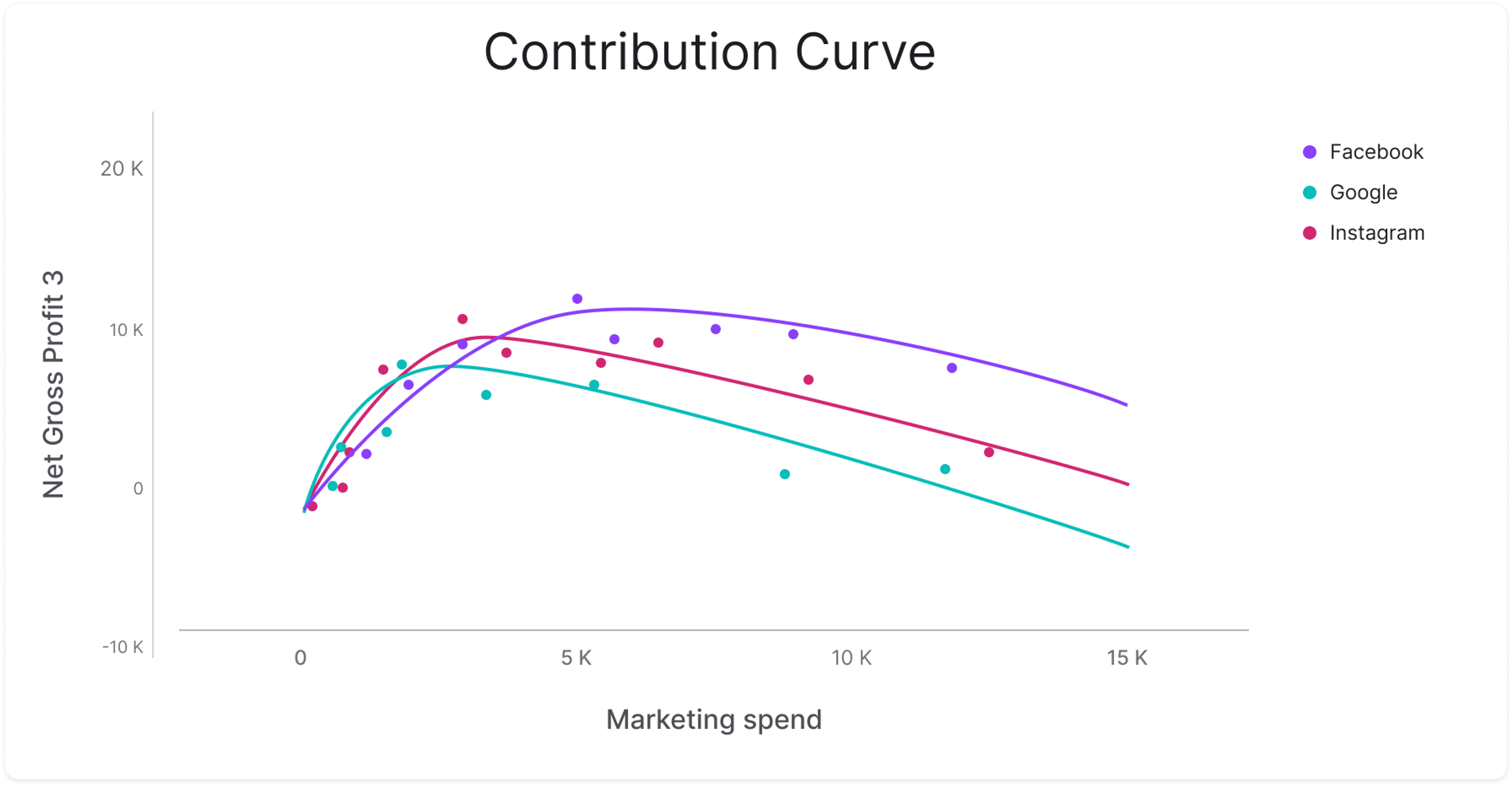In today's rapidly evolving e-commerce landscape, mastering the art of marketing budget allocation is more crucial than ever. As someone who scaled a multi-brand e-commerce venture in the 2010s, I experienced firsthand the provoking task of managing a substantial marketing budget across diverse markets and thousands of products. In this blog, I'll share my journey through these challenges and explore why Marketing Mix Modelling (MMM) has become indispensable for best-in-class e-commerce businesses aiming for profitable and long-term growth. Join me as I go through MMM and how it can revolutionize your approach to marketing going forward.
My relationship to, and the obvious need for, Marketing Mix Modelling
In the 2010s, while scaling my last venture, an e-commerce group of four distinct e-commerce brands, our annual marketing budget was around 20 million USD, covering 50,000 SKUs and shipping to 100 countries. However, significant marketing expenditure focused on just ten of these markets. As multi-brand shops, our e-commerce brands heavily relied on Google Ads, particularly shopping ads, and often depended on discounts to meet top-line goals.
It was hard, to say the least, with ever-changing discounts to even try to optimize on anything other than short-term ROAS. But we did OK thanks to being early to upgrade to profit bidding (including expected returns, COGS, and fulfillment cost) + profit LTV in mid-2010. But we were still measuring short-term uplifts with cookie-based attribution. Any marketing not performing according to the attribution was difficult to prioritize, even though we knew the value. When you force yourself to back everything up with data, you're often having a hard time prioritizing top-of-funnel marketing.
Nowadays, marketing budget allocation for e-commerce is even more challenging. Tracking is worse than ever, performance marketing is more expensive than ever, and competition is more fierce.
It is now time for a way to understand the bigger perspective of your marketing that isn't dependent on the cookie and classical UTM tracking, which too often gets blocked by privacy, etc. If you are even close to the complexity we had back in the days, you need an automated Marketing Mix Modelling service to guide your budget allocation.
The E-commerce need for Marketing Mix Modelling
There are a few defining macro dynamics that really push us all to have to use MMM if we want to achieve profitable and long-term growth. This list may not be exhaustive, but it is a good start.
All tracking is continuously deteriorating
No matter the channel, the format, and the country you are in - tracking is not what it once was. You have a regulatory push for anti-tracking, as in GDPR, for example, and you also have Apple's aggressive stand on privacy that is effectively and gradually blocking more and more tracking in every possible way they can. Cookie-based tracking should, therefore, not be used to steer budget allocation between different marketing initiatives (read more about that further down).
Data gathering and structuring are still complex and expensive
The project of getting "all your data in one place," i.e., your data warehouse, sounds to many like a straightforward project, but it has repeatedly shown that this is not that easy. It usually requires tech skills that no one at the e-commerce company possesses, so you must hire expensive tech folks or entirely depend on outside consultants. It is neither cheap nor easy to get great value from.
Feed-based, black box ad formats increase in popularity
The power that mainly Google and Facebook possess lets them launch ad formats that they make sure perform better than the old ones so that the industry standard is to use them. However, most new formats have resulted in less transparency and fewer targeting options for e-commerce companies. This results in that we are, more than ever, in the hands of Google and Facebook; thus, we need to explore ways of measuring it other than their preferred ways.
Shipping globally becomes the new standard when competition increases
The natural and expected increased competition often forces e-commerce companies to ship globally, which is growing data complexity with, for example, different shipping costs to each country and increased complexity in the ad platforms. It all makes the correlation between ROAS (or cost of sales) and profit weaker than ever, which means that you cannot just have a ROAS goal for the performance marketing, and as long as that is good, you increase the budget. That could lead your business to a quick death.
What you need to know about Marketing Mix Modelling
To introduce you all to marketing mix modeling and the things you need to know, I'll go through the essential parts from a user perspective, i.e., a person who uses it to make marketing budget decisions.
First, Marketing Mix Modeling became a thing when marketers wanted to measure the effect of media investments in the 1950s and 1960s. The obvious result is that this method is not dependent on cookies or digital tracking. The components in a Marketing Mix Modelling are typically the metric(s) you want to optimize for, generally gross sales, and the input variables such as spend per marketing type over time.
Marketing Mix Modelling is a multivariable regression model to find causality in marketing investments. Solving for "What is the Return On Investment for each marketing dollar in a certain type of advertising in a certain period in a certain geographic area?"
When done right, you get clear guidance and a completely different certainty about "what type of marketing make the most difference for my business, and what is the optimal budget?". For example, it doesn't matter if the cookie-based attribution is telling you that top-of-funnel activities in, for example, Meta Ads and YouTube ads are not delivering; you will see if there is a causal relationship between your spending in those categories of ads with an increase in, for example, revenue. The sales might still be attributed to, for example, some Performance Max format in Google ads, but what made you those extra dollars was the top-of-funnel activities. The same is true when the top of the funnel does not make you any marginal gain. Then you can be more confident about it.

An essential and powerful result of running marketing mix modelling on your marketing spend is that you will understand the marginal gain of your ad spend. "When does a dollar's worth of marketing start to decrease in effect on my sales?" is also possible to plot out for future decision-making in a so-called Contribution Curve, taking both the saturation and the adstock-effect into account (see below).

With an ongoing, dynamic Marketing Mix Modelling that measures your activities and results continuously, you can run continuous experiments with a limited budget to refine your saturation curve. With that approach, you will never fall victim to internal politics fighting about "the saturation curve not being valid anymore for 'my channel.' We will have a good ROI if I get a bigger budget."
It is crucial for Marketing Mix Modelling to have a clearly defined grouping of your marketing initiatives and stick to it. Because each group will get a separate saturation curve, and based on a specific budget you have for a certain period, you will get different allocations between these groups.
A very basic but powerful example of this is most likely going to be that the model will suggest to you that early in the season, you should spend relatively more in upper funnel activities and creating demand, and vice versa; in the end of the season, you might be advised by the marketing mix model to spend less in upper funnel, and more in demand creation, such as typical mid and low funnel campaigns on for example google ads and facebook ads.
The issue with traditional Marketing Mix Modeling; the sole focus on Gross Sales
We all know by now that the e-commerce industry is not unique, and investors need to see profitability sooner or later from their investments. There was a time when the industry didn't act like that was a known fact.
That means there are better solutions than the traditional way of using Marketing Mix Modeling only to optimize revenue. From a marketing spending perspective, revenue might be much cheaper in one country or one marketing channel, but it will only lead to unprofitable orders.
That's why you need other optimization strategies to execute in an MMM, and of course - that's where Dema.ai comes in. We let you evaluate and allocate your marketing budget based on the metrics that matter: Net Profit, profit LTV, sell-through rate, and other metrics, such as top-line sales, when that is needed.
If you have read this far, this is important for you. Please contact me and share your views, and we'll see if Dema can fit your business.